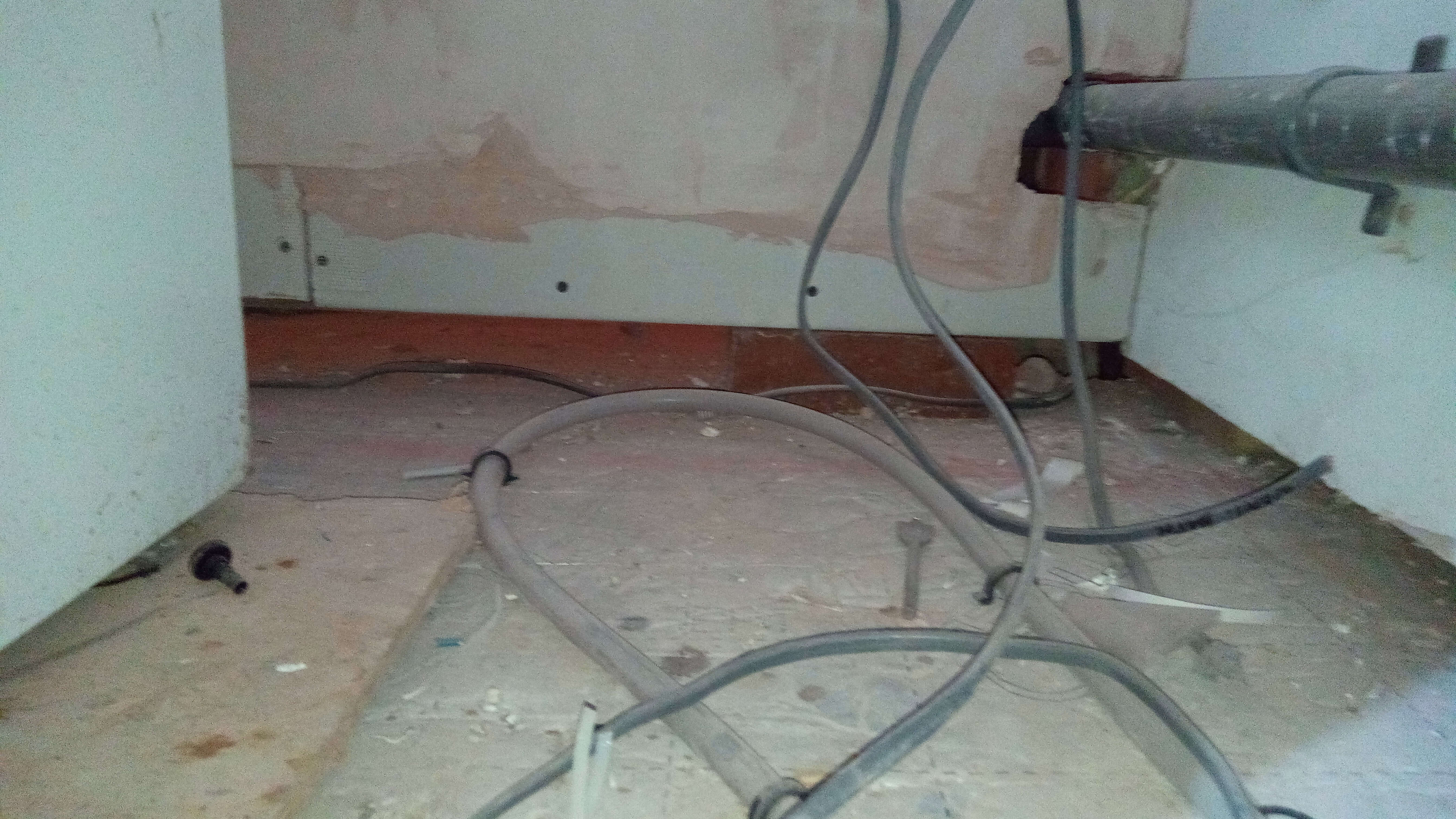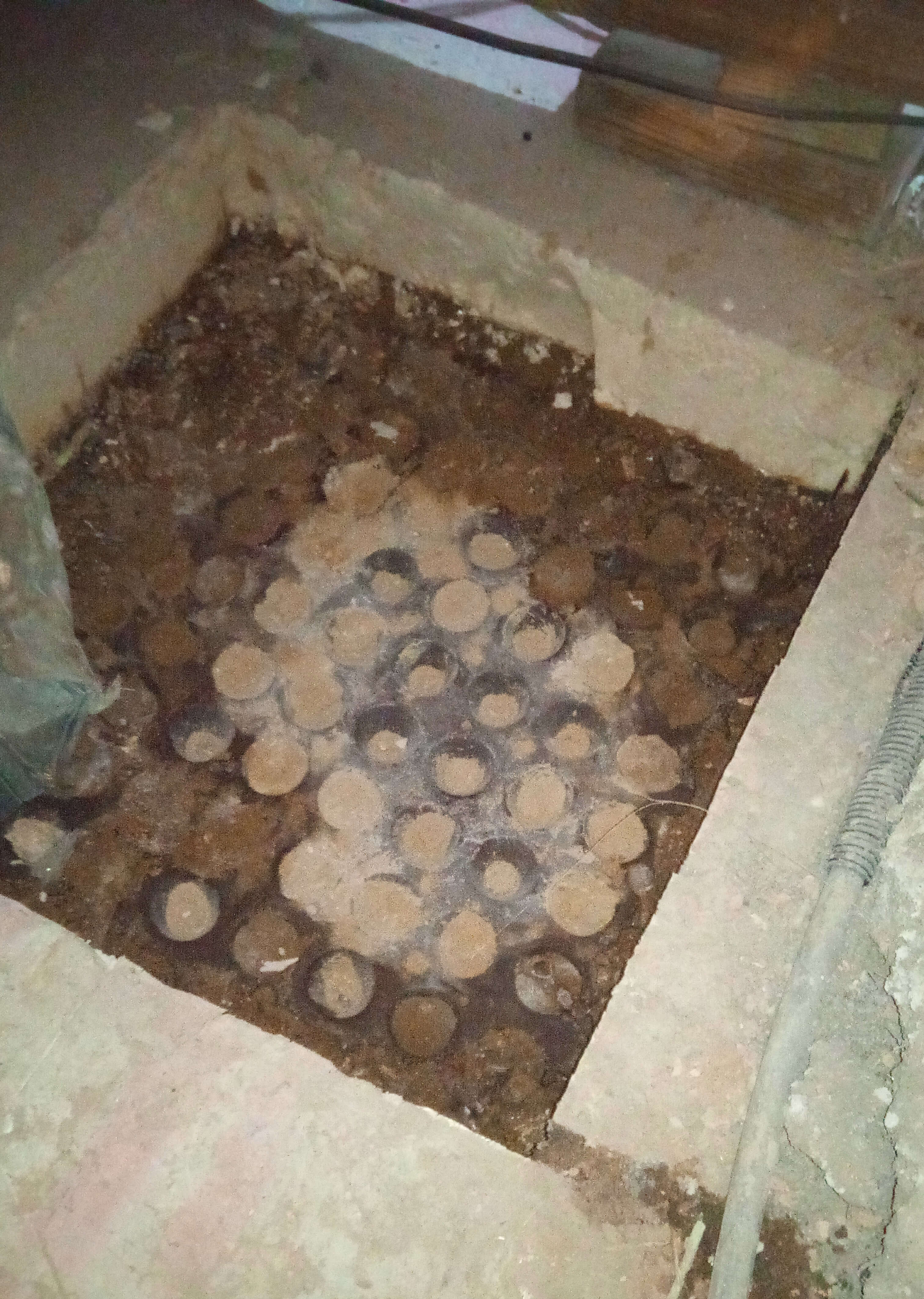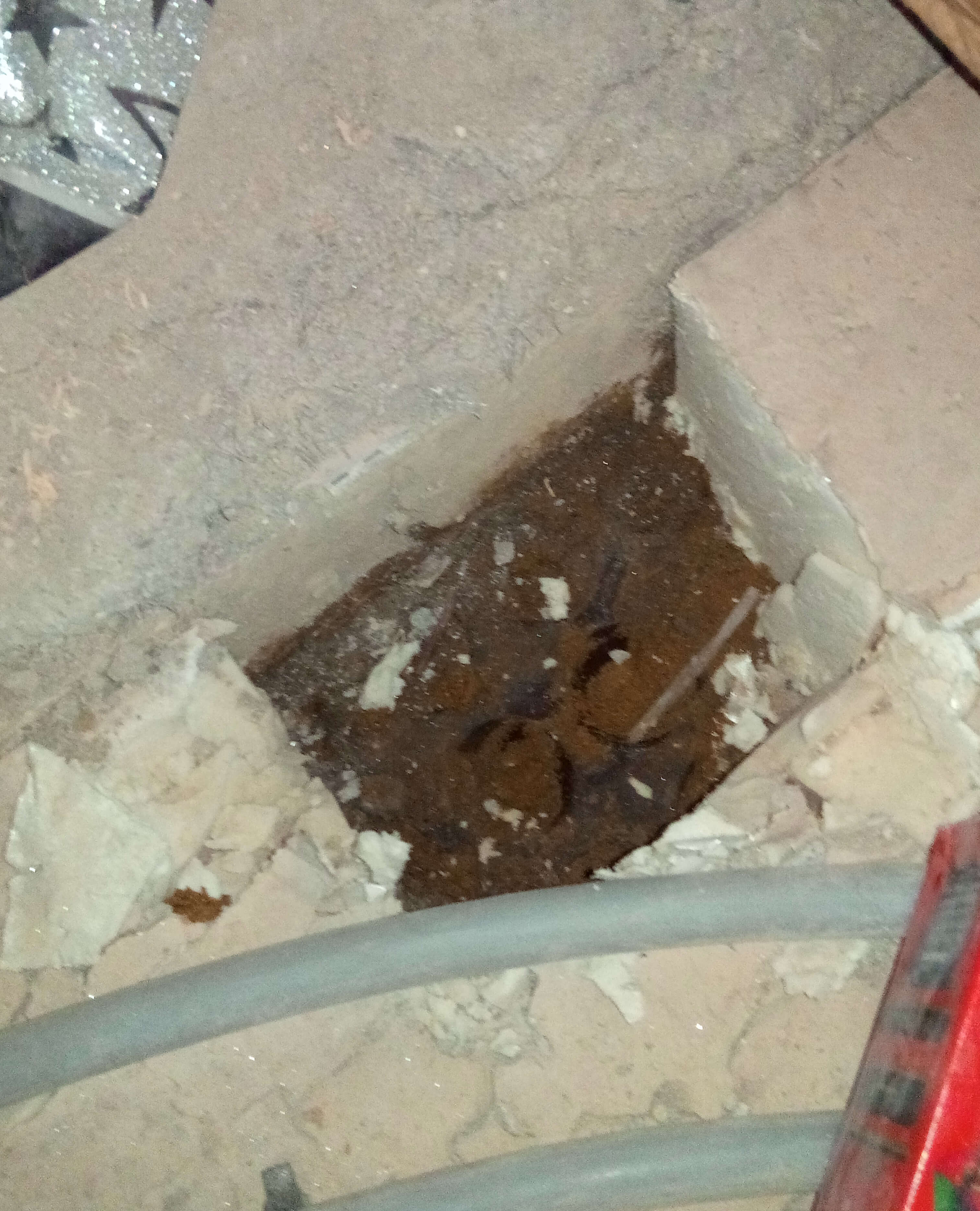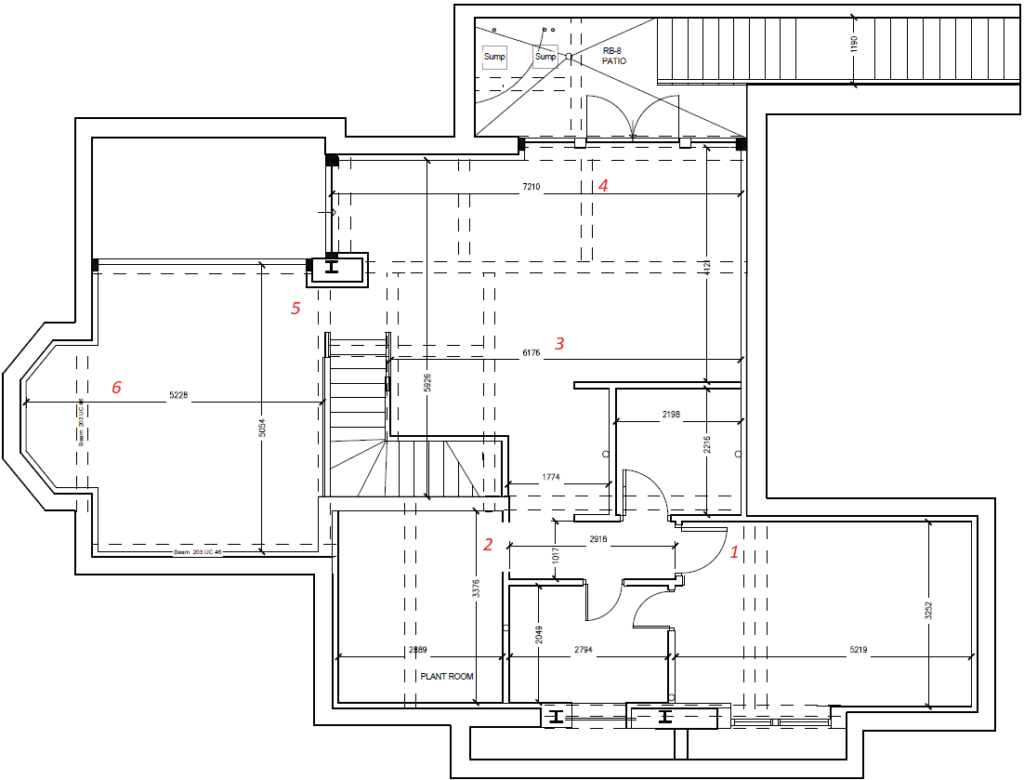The Brief
A property in south-west London had suffered a flooded basement due to water ingress, and therefore needed our flood damage cleanup service. It is unknown whether the cause of the ingress was from a faulty basement sump pump or breach of the damp proof membrane.
Regardless of the cause, we were called to undertake an assessment of the flood damage to the structure, the spread of moisture, and advise on the most efficient drying method as most of the basement had been flooded.
The Objective
The flooded basement floor was a floating floor and consisted of a concrete slab, delta cavity drainage membrane, closed cell insulation, water underfloor heating system and sand cement screed.
Upon our arrival on site, we took atmospheric readings inside the property. They registered as follows:
| Relative Humidity | Temperature | Dewpoint | Mixing Ratio | Vp |
|---|---|---|---|---|
| 46.7% | 20.4°C | 8.6°C | 7.30g/kg | 1.11kPa |
Because of the construction of the floor, the best method of obtaining accurate readings was to install humidity probes at depth. This would then provide us with accurate moisture readings of the wet basement floor, once they are left in place for 24 hours.
We were expecting the moisture readings from the humidity probes to be much higher than the initial ones taken; a saturated layer of sand could be seen in the inspection holes located within the plant room and bathroom.



The floorplan and readings below show the readings from the humidity probes after a 24 hour period and the extent of the saturation.



Upon investigation, we found that most of the moisture was trapped between the membrane and thermal insulation. Therefore, attempting to dry the wet basement floor using standard drying methods would prove unsuccessful.
The Technical Part – Flood Damage Drying
Due to the construction of the floor, the only alternative to extensive strip out work was to carry out specialist flood damage drying, in the form of pressure drying. Flood damage drying through the use of pressure drying technology utilises dry air, by forcing it down and through a hose system into the building’s construction.
The proposed process would consist of drying the property using a mixture of desiccants, turbines, and condensing dehumidifiers.
The desiccants would be used to produce heat and extract water vapour in conjunction with the condensing dryers; the water vapour would be condensed, then channelled out of the property as liquid water.
To remove excess moisture from the affected areas and continue our flood clean up, we started by emptying the basement, including all the building materials that were being stored there.
Speak to our restoration experts now
01622 926 505Using thermal imaging cameras and pipe detectors, we marked out safe spots for drilling into the screed which would create the holes required for the hoses. Before drilling the 25㎜ holes in all of the affected rooms, the underfloor heating system was fully drained to ensure there was no more water damage from residual water in the system.
Multiple injection drying systems were installed across strategic areas and the thermal insulation was manually removed to prevent damage to the damp proof membrane. Finally, the remote monitoring system was installed.
Once the environment was stabilised, we continued to monitor the flood damage drying regime and the materials being dried using our remote monitoring system. This ensures that drying is controlled and stopped at the appropriate time without the need for extra site visits.
With this, our flood damage cleanup in London was complete. We estimated the drying regime to take five weeks to fully dry the affected areas and the installation of the equipment to take two technicians two days to install.



